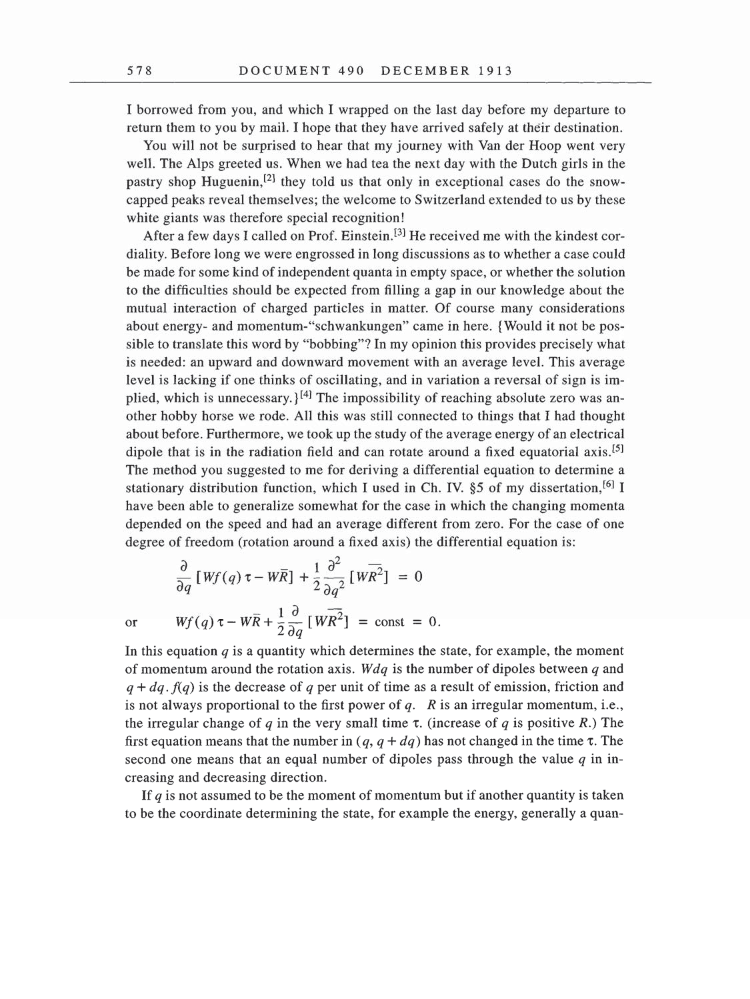578 DOCUMENT 490 DECEMBER 1913 I borrowed from you, and which I wrapped on the last day before my departure to return them to you by mail. I hope that they have arrived safely at their destination. You will not be surprised to hear that my journey with Van der Hoop went very well. The Alps greeted us. When we had tea the next day with the Dutch girls in the pastry shop Huguenin,[2] they told us that only in exceptional cases do the snow- capped peaks reveal themselves the welcome to Switzerland extended to us by these white giants was therefore special recognition! After a few days I called on Prof. Einstein.[3] He received me with the kindest cor- diality. Before long we were engrossed in long discussions as to whether a case could be made for some kind of independent quanta in empty space, or whether the solution to the difficulties should be expected from filling a gap in our knowledge about the mutual interaction of charged particles in matter. Of course many considerations about energy- and momentum-"schwankungen" came in here. {Would it not be pos- sible to translate this word by "bobbing"? In my opinion this provides precisely what is needed: an upward and downward movement with an average level. This average level is lacking if one thinks of oscillating, and in variation a reversal of sign is im- plied, which is unnecessary.}[4] The impossibility of reaching absolute zero was an- other hobby horse we rode. All this was still connected to things that I had thought about before. Furthermore, we took up the study of the average energy of an electrical dipole that is in the radiation field and can rotate around a fixed equatorial axis.[5] The method you suggested to me for deriving a differential equation to determine a stationary distribution function, which I used in Ch. IV. §5 of my dissertation,[6] I have been able to generalize somewhat for the case in which the changing momenta depended on the speed and had an average different from zero. For the case of one degree of freedom (rotation around a fixed axis) the differential equation is: a _ 1 a2 [Wf (q) T - WR] + - - [WR2] = o d1 2dq or Wf(q)x - WR+\-[WR2] = const = 0. 2 dq In this equation q is a quantity which determines the state, for example, the moment of momentum around the rotation axis. Wdq is the number of dipoles between q and q + dq.f(q) is the decrease of q per unit of time as a result of emission, friction and is not always proportional to the first power of q. R is an irregular momentum, i.e., the irregular change of q in the very small time x. (increase of q is positive R.) The first equation means that the number in (q, q + dq) has not changed in the time X. The second one means that an equal number of dipoles pass through the value q in in- creasing and decreasing direction. If q is not assumed to be the moment of momentum but if another quantity is taken to be the coordinate determining the state, for example the energy, generally a quan-
